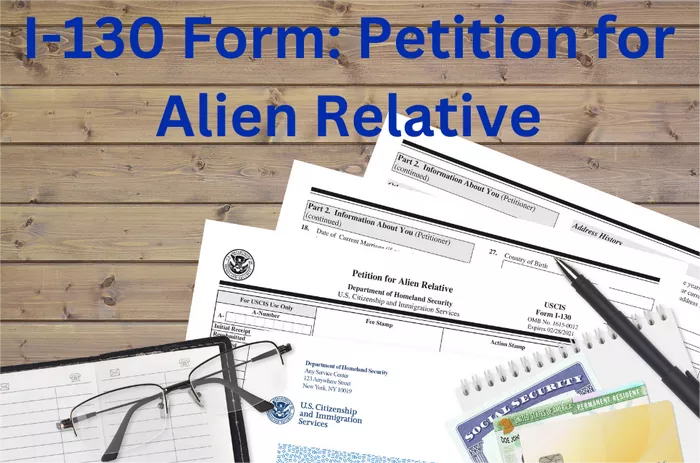Once your I-130 petition, also known as the Petition for Alien Relative, is approved by United States Citizenship and Immigration Services (USCIS), it marks an important step forward in the process of sponsoring a family member for immigration to the United States. This approval signifies that USCIS has recognized the relationship between you (the petitioner) and your relative (the beneficiary) as qualifying for family-based immigration benefits. However, the journey does not end here; in fact, it is just the beginning of a series of steps and considerations that you and your relative must navigate to achieve lawful permanent residency (green card status) in the United States.
Understanding the I-130 Approval
The approval of Form I-130 is a crucial milestone in the family immigration process. It confirms that USCIS has accepted the relationship claimed between the petitioner and the beneficiary. This relationship can include spouses, parents, children, and siblings, depending on the specific family-based category under which the petition was filed. Once approved, USCIS forwards the case to the National Visa Center (NVC) for further processing.
National Visa Center (NVC) Processing
After USCIS approves your I-130 petition, the case is transferred to the National Visa Center (NVC). The NVC acts as an intermediary between USCIS, the petitioner, and the beneficiary. Its primary role is to collect necessary documents, fees, and information to prepare the case for consular processing or adjustment of status, depending on where the beneficiary resides and their immigration status.
1. Document Collection and Fee Payment
The NVC will notify both the petitioner and the beneficiary about the next steps, which typically involve submitting various forms, supporting documents, and paying processing fees. These documents may include:
Affidavit of Support (Form I-864): This form demonstrates that the petitioner has adequate financial means to support the beneficiary in the United States.
Civil Documents: Such as birth certificates, marriage certificates, divorce decrees (if applicable), and police certificates from every country the beneficiary has lived in since the age of 16.
Visa Application Fees: These fees must be paid before the NVC can proceed with scheduling an immigrant visa interview.
2. Choice of Agent and Address Information
The NVC requires the petitioner and beneficiary to designate an agent who will receive communications regarding the case. It’s crucial to provide accurate contact information and maintain open communication with the NVC throughout the process to avoid delays.
SEE ALSO: HOW TO CHECK THE STATUS OF YOUR UKVI APPLICATION?
Consular Processing or Adjustment of Status
The path your case takes after NVC processing depends largely on whether the beneficiary is residing outside or inside the United States at the time the visa becomes available.
1. Consular Processing
If the beneficiary resides outside the United States, consular processing is typically the next step. This process involves:
Notification of Interview: The NVC schedules an interview appointment for the beneficiary at the U.S. consulate or embassy in their home country.
Medical Examination: Before the interview, the beneficiary must undergo a medical examination by an authorized physician.
Visa Interview: At the interview, a consular officer will review the beneficiary’s documents, conduct an interview, and determine whether to approve the immigrant visa application.
Immigrant Visa Issuance: If approved, the beneficiary will receive an immigrant visa in their passport, allowing them to travel to the United States and seek admission as a lawful permanent resident.
2. Adjustment of Status
If the beneficiary is already residing legally in the United States at the time the visa becomes available, they may be eligible to adjust their status to that of a lawful permanent resident without leaving the country. This process involves:
Form I-485, Application to Register Permanent Residence or Adjust Status: Filed with USCIS to request adjustment of status.
Biometrics Appointment: USCIS will schedule the beneficiary for biometrics (fingerprints, photo, and signature).
Interview: USCIS may require an interview to further evaluate the beneficiary’s eligibility for adjustment of status.
Approval of Green Card: If approved, the beneficiary will receive a green card (Form I-551) as proof of their lawful permanent resident status.
Conditional Permanent Residence (If Applicable)
In certain cases, such as when the beneficiary obtains lawful permanent resident status through marriage and the marriage is less than two years old at the time of approval, the beneficiary may receive conditional permanent residence. This status is valid for two years and requires the filing of Form I-751, Petition to Remove Conditions on Residence, within the 90-day period before the conditional green card expires.
Conclusion
Navigating the immigration process after your I-130 petition is approved involves multiple steps, careful documentation, and adherence to deadlines. Whether your relative undergoes consular processing abroad or adjusts status within the United States, thorough preparation and understanding of the requirements are essential. Working closely with immigration professionals, maintaining open communication with USCIS and the NVC, and staying organized throughout the process can help ensure a smoother transition to lawful permanent residency in the United States.


